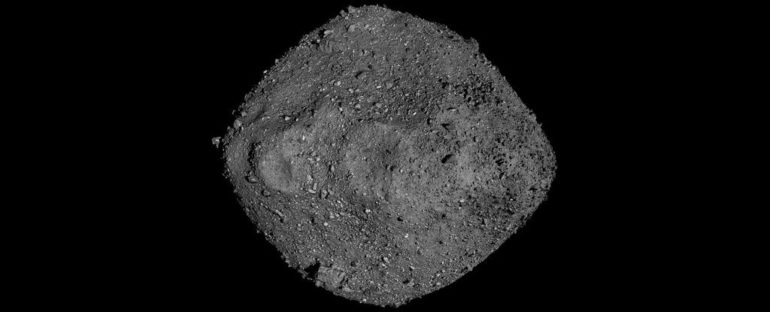The chance of asteroid Bennu colliding with Earth by the year 2300 CE is a little higher than we thought.
But you don’t need to whip out your asteroid strike survival handbook just yet. According to new calculations based on data gathered by NASA’s OSIRIS-REx mission, which orbited and sampled the asteroid, the probability of Bennu colliding with our home planet in that timeframe is just 0.057 percent – or one chance in 1,750.
The date we have to worry about the most is over 150 years away – 24 September 2182. On that date, Bennu will have a 0.037 percent chance of impacting Earth – just one chance in 2,700.
“The OSIRIS-REx data give us so much more precise information, we can test the limits of our models and calculate the future trajectory of Bennu to a very high degree of certainty through 2135,” said navigation engineer Davide Farnocchia of NASA’s Center for Near-Earth Object Studies.
“We’ve never modeled an asteroid’s trajectory to this precision before.”
Along with an asteroid called 1950 DA, Bennu ranks as the most hazardous known asteroid in the Solar System. Its orbital trajectory and period of around 1.2 years means that there are multiple close approaches to Earth in the coming centuries that are near enough for a possible impact.
OSIRIS-REx is one of the few probes to ever visit an asteroid. It spent two and a half years orbiting Bennu, taking detailed observations.
Thanks to this mission, we now have a much more detailed understanding of Bennu’s size, shape and composition. It’s a ‘rubble pile’ asteroid, a porous conglomeration of rocks that came together under gravity, with a mean diameter of around 490 meters (1,610 feet).
While it was hanging out performing all these tasks, OSIRIS-REx was able to take in-situ measurements of the asteroid’s orbit.
In particular, this allowed astronomers to take detailed observations of an effect that is small, but can accumulate over long periods of time to skew an asteroid’s orbital path – known as the Yarkovsky effect.
This is when heat from the Sun hits the asteroid, warming the side facing it. As the asteroid rotates, stored heat continues to be released as thermal radiation, generating a very, very small amount of thrust from the rock as it rotates into dusk.
“The Yarkovsky effect will act on all asteroids of all sizes, and while it has been measured for a small fraction of the asteroid population from afar, OSIRIS-REx gave us the first opportunity to measure it in detail as Bennu traveled around the Sun,” said astronomer Steve Chesley of NASA’s Jet Propulsion Laboratory.
“The effect on Bennu is equivalent to the weight of three grapes constantly acting on the asteroid – tiny, yes, but significant when determining Bennu’s future impact chances over the decades and centuries to come.”
This measurement allowed the research team to calculate more accurately than ever before how Bennu’s trajectory will ever so slightly change as it whirls around the Sun.
Of particular interest are moments in Bennu’s journey where a tiny nudge from Earth’s gravity can set it on a path of future impact.
By reducing the level of uncertainty in the asteroid’s trajectory, the researchers were able to exclude a number of these ‘gravitational keyholes‘ it could potentially pass through in 2135. In the end, one had the highest potential of putting it on a collision course with Earth in 2182.
Other influences the team took into consideration were the gravitational fields of the Sun, other planets and their moons, other asteroids, the solar wind, drag introduced by space dust, and Bennu’s own dust ejection events.
They even evaluated OSIRIS REx’s sample collection touchdown; it, you will be relieved to know, did not increase the chance of impact.
Nevertheless, the overall chance of impact is a little higher than we thought it was before we had the OSIRIS REx data. Previously, the impact probability had been calculated as one chance in 2,700 by the year 2200 CE.
Either way, it’s very unlikely that Bennu is going to smash into Earth. But the research does highlight what a difference precision measurements can make.
“The orbital data from this mission helped us better appreciate Bennu’s impact chances over the next couple of centuries and our overall understanding of potentially hazardous asteroids – an incredible result,” said astronomer Dante Lauretta of the University of Arizona.
If only we could send probes to all the asteroids…
The research has been published in Icarus.



